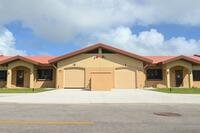Post from MilitaryByOwner
You may very well be in the thick of a frantic search for housing, focusing on BAH limitations, the number of bedrooms and bathrooms, school choices, and commutes. These are significant factors to consider before buying and renting a home, but these practicalities often overshadow the fact that we take for granted our desired neighborhoods are safe.
Before falling in love with the cutest bungalow in the area, stop to consider the big picture and arm yourself with knowledge of local crime statistics. Unearthing unsavory events near your potential home can spare you the chaos of living on a questionable street and prevent a difficult sale in the future.
Researching far in advance is critical before committing to substantial housing investments, particularly if you live overseas and are returning home. You’ll want to track local trends, take note if the crimes committed are one-offs, and how comfortable you are living near registered sex offenders, especially if children are living in your home.
As you begin your crime and safety search, keep your mind set local and don’t discount the value of specialized yet limited resources such as the Patch Network, NextDoor, and local newspapers. Not only do these sources publish police reports, but they’ll discuss topics that help you learn the overall health of the neighborhood. Indicators such as new businesses opening, strong school connections, and a wealth of civic event indicate citizens are involved in and care for their community.
For detailed reports and a perspective that comes from comparing adjacent neighborhoods and towns, the following resources provide a wealth of knowledge for many aspects of relocation and also focus heavily on crime statistics, mapping, and reporting.
1. CrimeReports
The nation’s largest database for mapping crime data includes information from over 1,000 law enforcement entities. Your zip code or address provides access to police activity in your neighborhood. Specifics about the incident such as the location and type of crime are documented. Users have the option to register personal home security cameras to help with future investigations.
2. U.S Department of Justice National Sex Offender Public Website
A mainstay in crime reporting specific to sex offenses, the NSOPW is known for its accuracy and simplicity during use. With an address or name, users are given information on the sex offenders living and working in your prescribed area.
3. Family Watchdog
Searchers enter names, and registered sex offenders are identified by address on a map pinpointing their location. Their crimes are identified as they relate to children, battery, and rape. Users will find pictures and all of the various names the offenders have used. There is an option to be notified if a sex offender moves into your neighborhood.
4. AreaVibes
AreaVibes creates a livability score for a city, neighborhood, or address from 1 to 100 that includes seven categories, including crime. Each category is broken into grades A+ through F. The Crime category compares nearby neighborhoods and crime trends in the area against national statistics.
5. NeighborhoodScout
For those looking for in-depth information on local trends and characteristics of a neighborhood or city, NeighborhoodScout delivers. Crime statistics, including violent and property crimes, are measured against cities nearby and nationally. The site has a user-friendly mapping feature that can outline a specific radius to identify crime occurrences within the designated area.
6. SpotCrime
If you prefer to have immediate notifications through social media, SpotCrime distributes through major platforms such as Twitter and Facebook. Sources of the crime data include law enforcement agencies, news reports, and even tips supplied from users of SpotCrime. Daily crime reports and a location’s most wanted list are also features.
7. CrimeMapping
Law enforcement agencies subscribe to this database and populate crime data to create a mapping system. With customized settings, users can elect to receive alerts about crimes that have occurred in a specific geographic perimeter and according to which type of crime was committed, including arson, vandalism, and sex crimes.
Although these resources are quite ideal for learning about crime in your potential neighborhood, there is really no substitute for driving and walking through the streets where you’d like to call home. Neighbors are the best sources of information and have insights you may not have considered. Topics like future developments, difficulties with local law enforcement, and troubling neighborhood wide quarrels won’t necessarily show up on databases.
Each resource has strengths and weaknesses. Spend a few moments with each to determine the best fit for your next destination.













